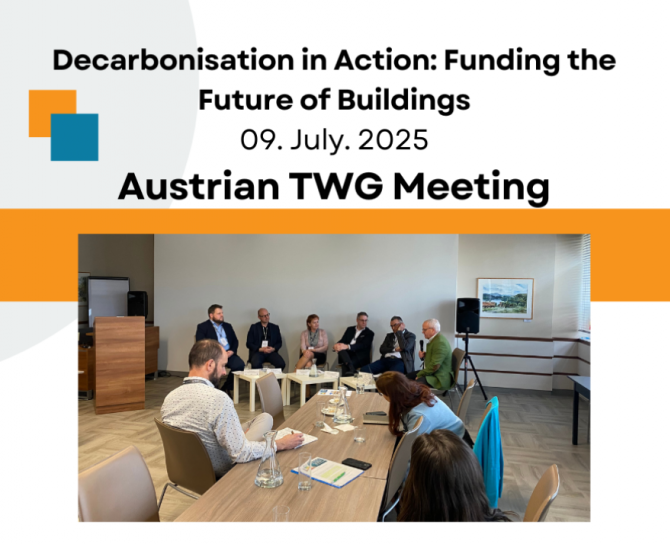
Decarbonization of the building stock as an opportunity: How we can still achieve the climate targets with innovative financing and courageous policies.
As part of the EU-Life project RENOINVEST, we would like to cordially invite you
- on Wednesday, 09.07.2025 from 4 to 6 pm
- in the “Hinterhaus”, Schottenfeldgasse 12, 1070 Vienna
- Moderation: Wolfgang Amann (IIBW)
For organizational reasons, please register at this link.
You are welcome to send us in advance suggestions on important financing topics or burning questions for the discussion round to until June, 30th.
Aim of the event:
Discussion on the current situation of subsidies for the decarbonization of the building stock in Austria in light of the new budget. Assessment of the impact on climate targets and presentation of innovative financing approaches as part of the RENOINVEST National Action Plan.
The central topics on the agenda are
- Changing funding landscape:
- Analysis of the new budget: cutback or course correction?
- Impact on the achievement of building decarbonization targets.
- Innovative financing is the key:
- Presentation of planned measures in the national action plan.
- Discussion about new financing models for sustainable renovations.
- Case studies as practical examples:
- Meidlinger L: Private refurbishment & homeowners’ association.
- LeiSan: social rental apartments in municipal ownership.
- Evaluation of alternative financing models and their transferability.
- Stakeholder dialog:
- Involvement of financial, technical and implementation partners.
- Open discussion rounds with feedback on the action plan.
BACKGROUND
The financing of building refurbishment in Austria in 2025 faces several structural and political challenges that affect both the implementation of climate targets and social justice. The central points are:
Subsidies – uncertainty and gaps
- The federal government’s refurbishment campaign was temporarily discontinued at the end of 2024. There will be no funding in 2025, but from 2026 (lower) funding will be available again for replacing heating systems and refurbishment – however, the structure and funding amounts are currently still open.
- Although some federal states have increased their own programs, there is a lack of nationwide planning security.
- Funding is often quickly exhausted, which leads to a “funding freeze effect”: (e.g. WBF Salzburg, Styria) Projects are postponed or not even started.
Financing gap for ambitious projects
- Climate-active refurbishments in particular (e.g. passive house standard, renewable energy integration) are expensive. The existing subsidies often only cover part of the additional costs.
- Private owners and smaller homeowners’ associations (WEGs) often do not have access to long-term, favorable financing.
- There are no tax incentives for private owners and the depreciation period for companies does not provide sufficient financial incentives for refurbishment.
Social dimension: Who can afford refurbishment?
- The EU Buildings Directive (EPBD) calls for decarbonization by 2050, but also for the social impact to be limited.
- In practice, this means that without targeted support, there is a risk of social imbalance, particularly for low-income households and communities with old housing stock.
- The EU Climate and Social Fund is intended to remedy this situation. In the period from January 1, 2026 to December 31, 2032, Austria will be allocated a maximum of EUR 579.0 million from the Climate Social Fund to finance the national Climate Social Plan (CSP). In addition, national co-financing of at least 25% of the estimated total costs of the plan is required.
- In order to receive funding from the KSF, Member States must develop a CSP that includes measures and investments that support particularly energy-poor households, households suffering from mobility poverty and vulnerable micro-enterprises.
Complexity and fragmentation
- The funding landscape is fragmented: federal and state programs, different criteria, complicated applications.
- There is a lack of integrated financing models that combine technical, social and economic aspects.
- Bundling of public and private funds in a national subsidies bank in the government program 2025 – 2029. The question is whether this will also be accompanied by a simplification of the application process and standardization of sustainability criteria (without softening)?
Innovation backlog for financing models
- Innovative models such as energy contracting, one-stop stores, revolving funds or green bonds are still not very widespread in Austria.
The planned national action plan should address this – but it needs broad stakeholder involvement in order to develop viable solutions!
Our site uses cookies. These files provide us informations about the user's visiting habits but do not store personal informations. By browsing our website you agree to the use of cookies. More information here.
